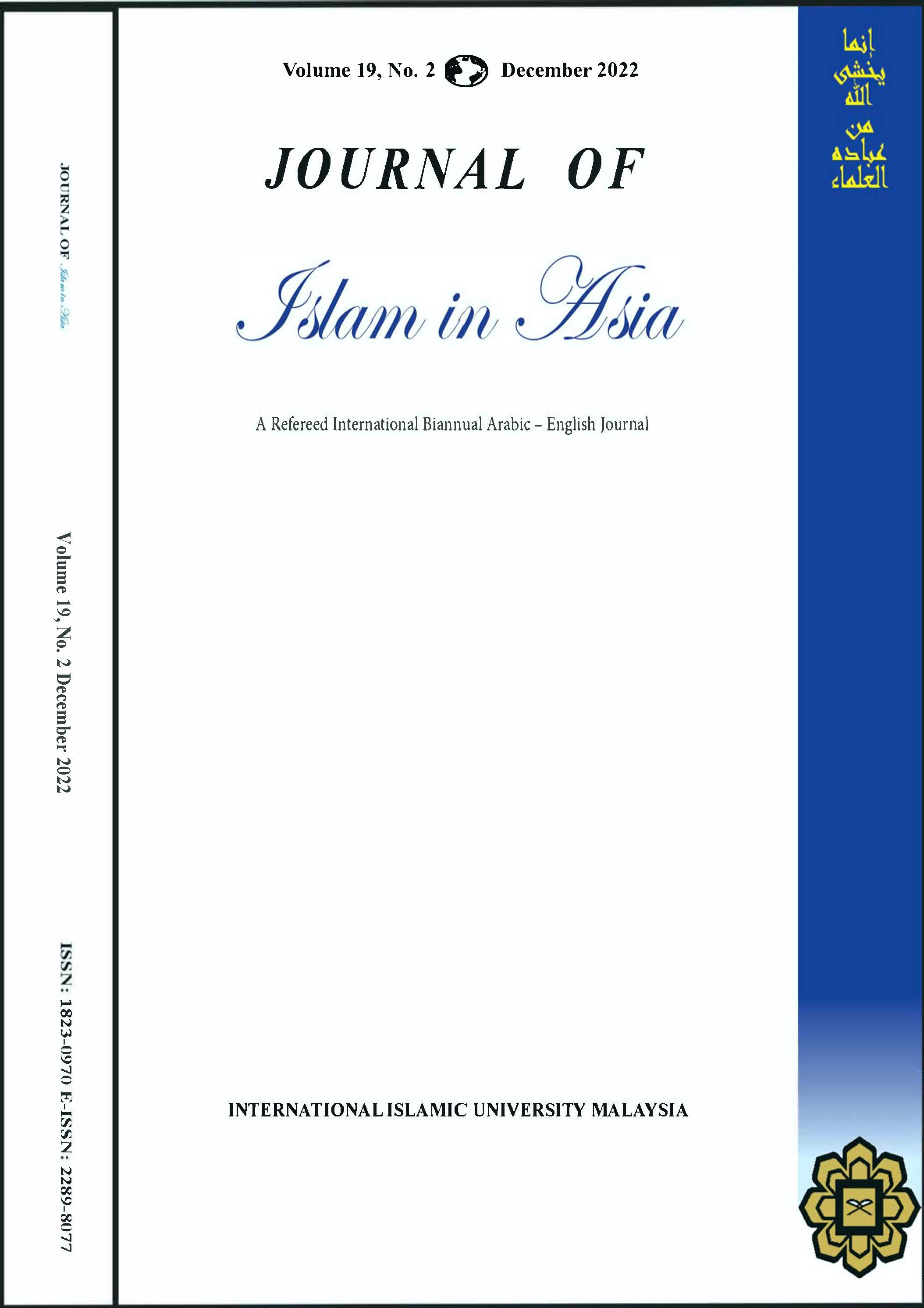:أساليب تنمية الكفاءات في الحضارة الإسلاميَّة وتطبيقاتها المعاصرة
دراسة تحليليَّة لإسهامات عمر بن عبد العزيز
DOI:
https://doi.org/10.31436/jia.v19i2.1135Keywords:
Administrative Competence, Administrative Organization, Islamic Civilization, Islamic Management, Financial Management, Omar Bin Abdul AzizAbstract
Abstract
The study aimed to identify administrative competence during the reign of Omar bin Abdul Aziz, may Allah be pleased with him. This research shows the concept of administrative competence and management in Islam, as well as the concept of Islamic administrative thought, competence, and methods used by the Emir of the Faithful Omar bin Abdul Aziz in the development of administrative competencies in the Islamic State. The study also touched on Omar's policy of state administration, the assumption of governors, the appointment of judges, and the methods used by him in reforming financial management. The importance of this research is represented by its focus on the importance of knowing the methods by which countries advance, achieve interests, and close the doors of corruption guided by what was founded on Islamic civilization, especially the caliphate of Omar bin Abdul Aziz. As well as the importance of exposing the shortcomings of the mechanisms used to develop competencies in our contemporary reality. The researcher followed the descriptive approach, which is based on the method of induction and analysis and on the comparative method, and the study presents and analyzes the methods of developing managerial competencies in the modern era. Through its findings, the study recommended a set of recommendations, and a set of scientific dissertations were proposed through the content of the study.
References
Aʿbd ālḥkiـm، abu muḥmmad bin aʿbd āllh. (1984m). Siyrat oʿmr bin aʿbd ālʿzeez aʿly mā rwāh ālimām mālik ibn anas wa aṣḥābih، (taṣḥyḥi wataʿlyq aḥmad aʿbyd)، ṭ2، ālqāhrat: maktabat wahabat.
Aʿbd ālʿzeez، amāny (2008m): ālidārat fiy ālislām (fiy aʿhd hālẖlyfat ālrāšhid aʿmir bin aʿbd ālʿzeez) baḥṯh muqadim linayl darǧat Ālduktuwrāh، qism āldrāsāt ālislāmyat buklyat āladāb ǧāmiʿat ālẖrṭwm- kuliyat āldirāsāt ālʿlyā.
Aḥmād، ālǧawhryi ismāʿiyl. (1984m). Ālṣḥāḥi، natāiǧ ālluġat ālʿarbiyat waḥuǧāǧ ālʿarbyat، dār ālʿilm lilmalāyyn bayrwt ṭ3.
Aḥnfiy، aʿbd ālġafār. (2002m). أAsāsiyāt idārat munaẓmāt ālaʿmāl، āldār ālǧāmiʿyat، āliskandaryat، miṣr.
Aʿlāwnat، muṭyʿa. (2011m). Ālsyāsat ālšrʿyat li-oʿmr bin aʿbd ālʿzeez fy sn ālinẓmat، risālat māǧestyr، ǧāmʿat mawtat.
Ālḏahby، abu aʿbd āllh šhms āldiyn. (1989m). Syra aʿlām ālnublāʾ- (ašhrf aʿla tḥaqyq ālkitāb šhaʿyb ālarnāawṭ)، ṭ 7، bayـrwt: muasasat ālrsālat.
Āldawry، zakriyā. (2010). Mubādy wamudāẖal ālidārat wawaẓāifhā، ālardan: dār ālyāzwry llnšur wāltwzyʿ.
Āldwsry، ṣālḥ ṣbry، waẖarwn. (2021m). Samāt ālqāid ālidāry wamuʿwaqāt ālqiyādat ālidāryat fiy ālduwal ālnāmyat.
Ālǧandyi، anwar. (1980m). Ālislām wālʿālm ālmuʿāṣir، ṭ 5، bayruwt: ṭubʿat ālkitāb āllbināny.
Ālḥssan، māǧid muḥmmad aʿbd āllh. (2005m). Siyāsatʿomar bin aʿbd ālʿzeez ālqḍāiyat watṭbiyqāthā fiy ālmamlakat ālʿrbyat ālsaʿudiyat، risālat māǧestiyr، ǧāmiʿat nāyf ālʿrbyat ālʿlm ālimnyat، ālsaʿudiyat.
Āliṣfahāniy، abu ālqāsim ālḥassan bin muḥammad، (1997m): ālmufradāt fiy ġariyb ālquran، maktabat nazār muṣṭafah ālbāz، ṭ 1.
Ālqḥṭـāny، muḥmmad bin mušhyib bin suـlmiān. (1997m). Ālnamuwḏaǧ ālidāry ālmustẖlaṣ min idārat oʿmr bin aʿbd ālʿzeez، manـšhwrāt ǧāmʿ at umālqra ṭabʿat، ālmamlakat ālʿarbyat ālsaʿudiyat
Ālquran ālkrym
Ālrwāḥnat، aʿly ǧamʿiat (2012m). Minhaǧ oʿmr bin aʿbd ālʿzeez fiy āliṣlāḥ ālāqtṣādy، ālardan: muǧalat āliftāʾ.
Ālshahrǧāny، rāġab (2010m): ṭarq iẖtiyār ālwlāt wālamrāʾ fiy ālḥaḍārat ālإislāmyat. Muwqʿi qiṣat ālislām.
Ālṣlāby، aʿly muḥmmad. (2006m). Āldawlat ālumwiyat ʿwāmil ālāzdhār watdāʿyāt ālānhyār، ālqāhrat: dār āltwzyـʿ wālnـšr ālإslāmyat.
Ālṭabriy، muḥmmad bin ǧariyr (2009m) tāriyẖ ālṭabary tāriyẖ ālamam wālـmuluwk، dār ibn ḥazim.
Aʿmārat، muḥmmad. (1997m). Ālislām waḍrwrat āltaġyir، muṭbʿat wizārat āliʿlām، ālkuwzyt.
Aʿzeez، kuwldān aʿbd ālrḥym. (2014m). Taǧribat āliṣlāḥ ālāqtiṣādiy aʿnd oʿmr bin aʿbd ālʿzeez wamady imkāniyat ālāistfādat minhā fiy iqlym kwardastān āliʿrāq، muǧalat tanmyat ālrāfdayn، ālmuǧlad (36).
Banu iʿysa، Aḥmad. (2020m). Ālmadẖall ilālidārat āl-islāmyat ālaḥdiyṯh، ǧamʿyat āltaswiyiq ālmiṣryat.
Chanlat J.F. (2007). Le stress au travail: problème d’actualité dans les entreprises et enjeu social. Notes du congrès « Le stress au travail, une réalité. Quelle prévention, quels acteurs et quels outils? », Nancy, 1er et 2 février 2007. Documents pour le Médecin du Travail, no. 110, 2e semestre 2007, INRS, p. 200-201.
Cooper C.L., (1988). Les réactions au stress à l’atelier et au bureau. In Kalimo, R., El-Batawi, M.A., cooper, C.L. Les facteurs psychosociaux en milieu de travail et leurs rapports à la santé. Organisation mondiale de la santé, Genève.
Drat، oʿmr muḥmmad (2009m): mudẖal ila ālidārat. Kuliyat āltiǧārat- ǧāmʿiat aʿyn šhams.
Duncan Gallie, Alan Felstead, Francis Green and Hande Inanc, (2013), “Fear at Work in Britain First Findings from the Skills and Employment Survey, 2012”, Cardiff University report. http://www.cardiff.ac.uk.
Ǧarydat ālihrām. (1985m). Silsilat maqālāt aʿn uʿmr bin aʿbd ālaʿzeez.
Ǧuwdat، maḥfwuẓ aḥmad. (2006m). إIdārat ālǧawdat ālšhāmilat mufāhiym watṭbiyqāt، oʿmān: dār wāil llnašhr، ālardn.
Ḥabyb، saʿid aʿbd ālsalām. (1980m). Oʿmr bin aʿbd ālʿzeez، ālqāhirat: dār ālfakr ālʿrby.
Ḥamzat، maʿn maḥmwd uʿṯhmān. (2005m). Ālḥwār fiy ālquran ālkrym، rsālat māǧastyr fiy uṣwl āldyn ila kuliyat āldirāsāt ālʿlyā bǧāmʿat ālnaǧāḥ ālwṭnyat، nābls، falsṭyn.
Hassan ālyāsiry (٢٠١٩): ālḍaʿf wālǧُubn ālidāry. Ālasbāb. Wālanmāṭ. Muǧalat ālzamān. Https://www.azzaman.com
Hilāf، aʿbd ālwhāb. (1931m). Ālsiyāsat ālšharʿyat aw naḍām āldawlat ālislāmyat fiy ālšuuwn āldustuwriyat wālẖāriǧyiat wālmālyat، ālqāhrat: ālmṭbʿat ālslfyat.
House, RJ, & Rizzo, JR (1972). Role Conflict and ambiguity as Critical Variables in a Model of Organizational Behavior. Organizational Behavior and Human Performance, 7: 467-505.
Ibn aby šhayba، aʿbd āllha bin Muḥammad. (1986m). Ālmuṣnif fiy ālaḥdiyṯh wālaṯhār، ǧ10، krātšy dār ālqـuran wālʿulـum ālinsānyat، bākistān.
Ibn aḥmyd، ṣālḥ bin aʿbd āllh. (1999m). Mʿālam fiy minhaǧ āldaʿwat، dār ālandals ālẖaḍrāʾ، ǧida، ṭ 1 1420..
Ibn manẓuwr. (2010m). Lisān ālaʿrb، dār ālbayān، bayrwt.
Ibrāhym، ḥusayn tawfiyq. (1999m): ālāqtiṣād ālsiyāsiy lliṣlāḥ ālāqtiṣādiy، ālqāhir: markaz āldirāsāt ālsiyāsiyat wālāistirātayǧiyat.
Rizzo, JR. (1972). Role Conflict and Critical Role ambiguity As Variables in a Model of Organizational Behavior. Organization Behavior and Human Performance, 7, 467-505.
Zahʿrwr، šhakry. (2016m). Ālidārat ālʿāmat، baʿḍ ālamrāḍ ālmustʿṣiyat waṭarq muwāǧihthā، ālmuǧlat ālǧazāiriyat lladāʾ ālāiqtiṣādiy raqm 1، ǧāmʿat ālǧazāir.
Downloads
Published
Versions
- 2023-02-02 (2)
- 2022-12-17 (1)




